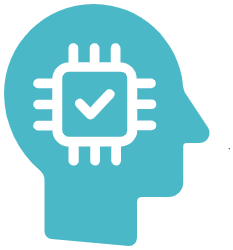GPT-4, enhanced with visual capabilities and often referred to as GPT-4V or gpt-4-vision-preview in API terminology, enables the model to process images and respond to inquiries about them. Traditionally, language models were confined to a single type of input, specifically text. The integration of GPT-4’s vision capabilities with its advanced language models can revolutionize various aspects of healthcare, offering innovative solutions and improving patient care. Here are some commercial applications in the healthcare sector:
- Diagnostic Assistance: GPT-4 can assist healthcare professionals by analyzing medical images such as X-rays, MRIs, or CT scans, providing preliminary assessments or highlighting areas that require closer examination, thus aiding in faster and more accurate diagnoses.
- Telemedicine Enhancements: In telehealth platforms, patients can upload images of their symptoms (e.g., skin conditions, wounds) for remote evaluation. GPT-4 can offer initial assessments, suggest possible conditions, or recommend when to seek in-person care, enhancing the efficiency of telemedicine consultations.
- Medical Education and Training: Utilizing GPT-4 for medical education, students and professionals can analyze complex medical images, with the AI offering detailed explanations, pointing out key features, and facilitating interactive learning experiences.
- Electronic Health Records (EHR) Management: GPT-4 can assist in extracting and summarizing pertinent information from medical images that are part of EHRs, improving record-keeping, and ensuring that critical information is highlighted for healthcare providers.
- Patient Engagement and Education: Healthcare providers can use GPT-4 to create personalized educational content for patients by explaining medical imaging findings in an understandable way, thereby empowering patients with knowledge about their health conditions.
- Surgical Planning and Simulation: Surgeons can use GPT-4 to analyze pre-operative imaging, helping in planning surgical procedures by providing insights on anatomy, potential complications, or the best surgical approach, enhancing surgical outcomes.
- Rehabilitation and Physical Therapy: By analyzing images or videos of patients performing rehabilitation exercises, GPT-4 can offer corrections, suggest improvements, and tailor rehabilitation programs to individual needs, improving recovery rates.
- Health Monitoring Devices: Integration with wearable or health monitoring devices that capture images, such as skin cameras or retinal scanners, allowing GPT-4 to provide real-time analysis and alerts for changes that may indicate health issues.
- Pharmaceutical Research: In drug discovery and development, GPT-4 can analyze molecular structures, cell images, or other visual data, accelerating research and aiding in the identification of potential drug candidates.
- Remote Patient Monitoring: For chronic conditions or post-operative care, patients can send images to monitor wound healing, swelling, or other conditions. GPT-4 can help in assessing progress and alerting healthcare providers to potential issues.
These commercial applications not only promise to enhance the quality and accessibility of healthcare but also streamline operations, reduce costs, and contribute to more personalized patient care.

